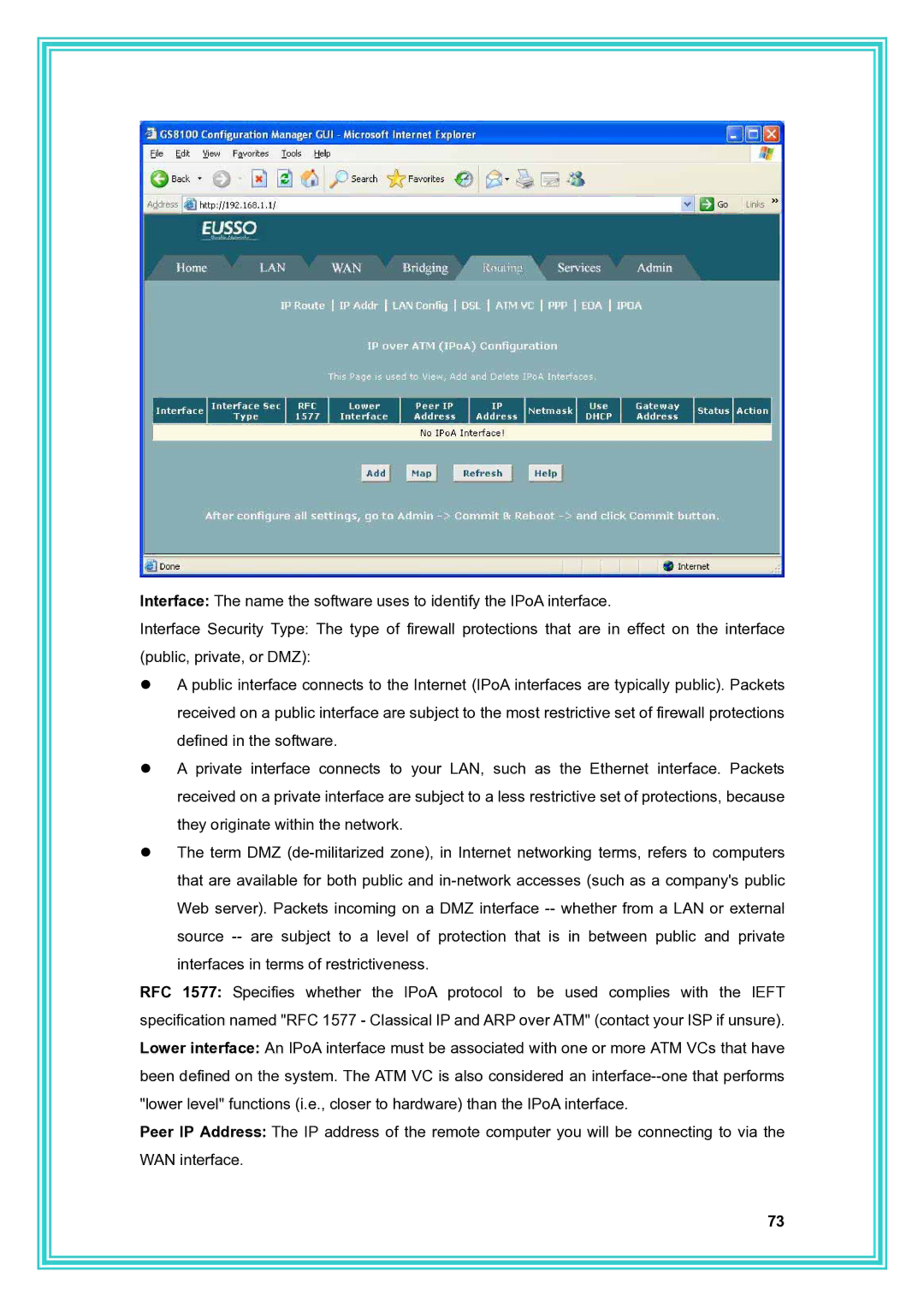
Interface: The name the software uses to identify the IPoA interface.
Interface Security Type: The type of firewall protections that are in effect on the interface (public, private, or DMZ):
zA public interface connects to the Internet (IPoA interfaces are typically public). Packets received on a public interface are subject to the most restrictive set of firewall protections defined in the software.
zA private interface connects to your LAN, such as the Ethernet interface. Packets received on a private interface are subject to a less restrictive set of protections, because they originate within the network.
zThe term DMZ
RFC 1577: Specifies whether the IPoA protocol to be used complies with the IEFT specification named "RFC 1577 - Classical IP and ARP over ATM" (contact your ISP if unsure). Lower interface: An IPoA interface must be associated with one or more ATM VCs that have been defined on the system. The ATM VC is also considered an
Peer IP Address: The IP address of the remote computer you will be connecting to via the WAN interface.
73
